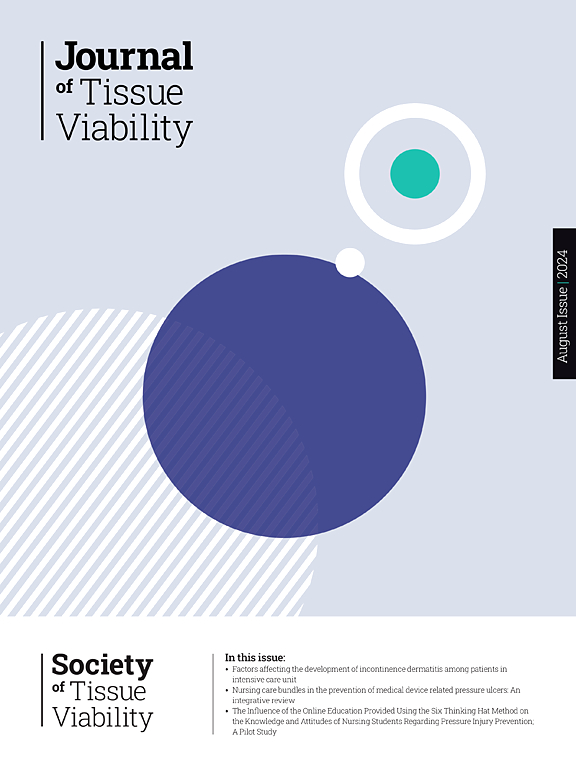Dynamic microcirculation characteristics of plantar skin in response to life-like pressure in diabetes patients
IF 2.4
3区 医学
Q2 DERMATOLOGY
引用次数: 0
Abstract
Diabetic foot ulcer (DFU) is a severe complication of diabetes associated with high mortality. Elevated plantar pressure and impaired microcirculation are considered as primary contributions to DFU. The International Working Group of Diabetic Foot (IWGDF) has recommended an increase in the level of walking‐related weight‐bearing daily activity by an extra 1000 steps/day, but has not provided specific exercise prescription due to limited data on the relationship between pressure and plantar microcirculation. In this study, we aimed to figure out the influence of cyclic life-like pressure on plantar DFU formation from microcirculation perspective. 20 healthy young subjects, 20 healthy middle-aged and elderly subjects, and 20 diabetes patients were recruited. A novel technique was developed to measure real-time skin blood flow (SBF) under cyclic life-like plantar pressure stimulus at plantar 1st metatarsal head. The exerted plantar force was adjusted from 10N (127.3 kPa) to 40N (509.3 kPa), increasing in an increment of 5N (63.7 kPa). Post-load SBF was measured for comparison after each level of pressure. We found all levels of cyclic pressure significantly increased plantar immediate-load and post-load SBF. Furthermore, a pressure threshold emerged at which the increasing magnitude of immediate-load SBF began to diminish. This altered microcirculatory response may serve as a valuable marker for identifying DFU risk and inform precise exercise prescriptions for patients with diabetes.
糖尿病患者足部皮肤动态微循环特征对生活压力的响应
糖尿病足溃疡(DFU)是糖尿病的严重并发症,死亡率高。足底压力升高和微循环受损被认为是DFU的主要原因。国际糖尿病足工作组(IWGDF)建议将步行相关的日常负重活动水平增加1000步/天,但由于压力和足底微循环之间关系的数据有限,尚未提供具体的运动处方。本研究旨在从微循环角度探讨类生命循环压力对足底DFU形成的影响。健康青年受试者20名,健康中老年受试者20名,糖尿病患者20名。研究了一种实时测量足底第一跖头在模拟生命压力刺激下皮肤血流量的新技术。施加的足底力由10N (127.3 kPa)调整为40N (509.3 kPa),增加5N (63.7 kPa)。在每个压力级别后测量加载后的SBF进行比较。我们发现所有水平的循环压力都显著增加了足底立即加载和加载后的SBF。此外,出现了一个压力阈值,在这个压力阈值上,立即荷载SBF的增加幅度开始减小。这种改变的微循环反应可以作为识别DFU风险的有价值的标志,并为糖尿病患者提供精确的运动处方。
本文章由计算机程序翻译,如有差异,请以英文原文为准。
求助全文
约1分钟内获得全文
求助全文
来源期刊

Journal of tissue viability
DERMATOLOGY-NURSING
CiteScore
3.80
自引率
16.00%
发文量
110
审稿时长
>12 weeks
期刊介绍:
The Journal of Tissue Viability is the official publication of the Tissue Viability Society and is a quarterly journal concerned with all aspects of the occurrence and treatment of wounds, ulcers and pressure sores including patient care, pain, nutrition, wound healing, research, prevention, mobility, social problems and management.
The Journal particularly encourages papers covering skin and skin wounds but will consider articles that discuss injury in any tissue. Articles that stress the multi-professional nature of tissue viability are especially welcome. We seek to encourage new authors as well as well-established contributors to the field - one aim of the journal is to enable all participants in tissue viability to share information with colleagues.
 求助内容:
求助内容: 应助结果提醒方式:
应助结果提醒方式:


